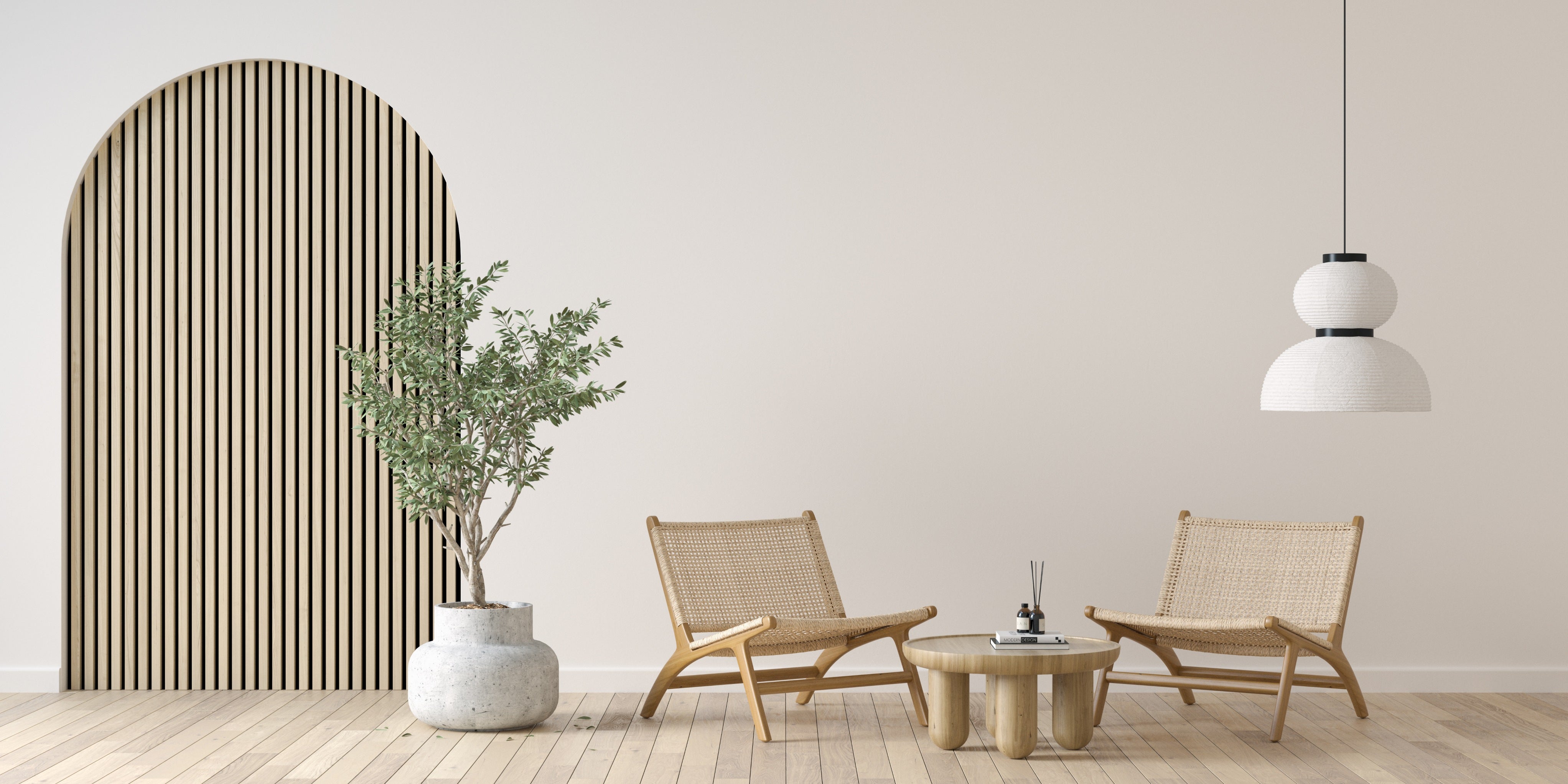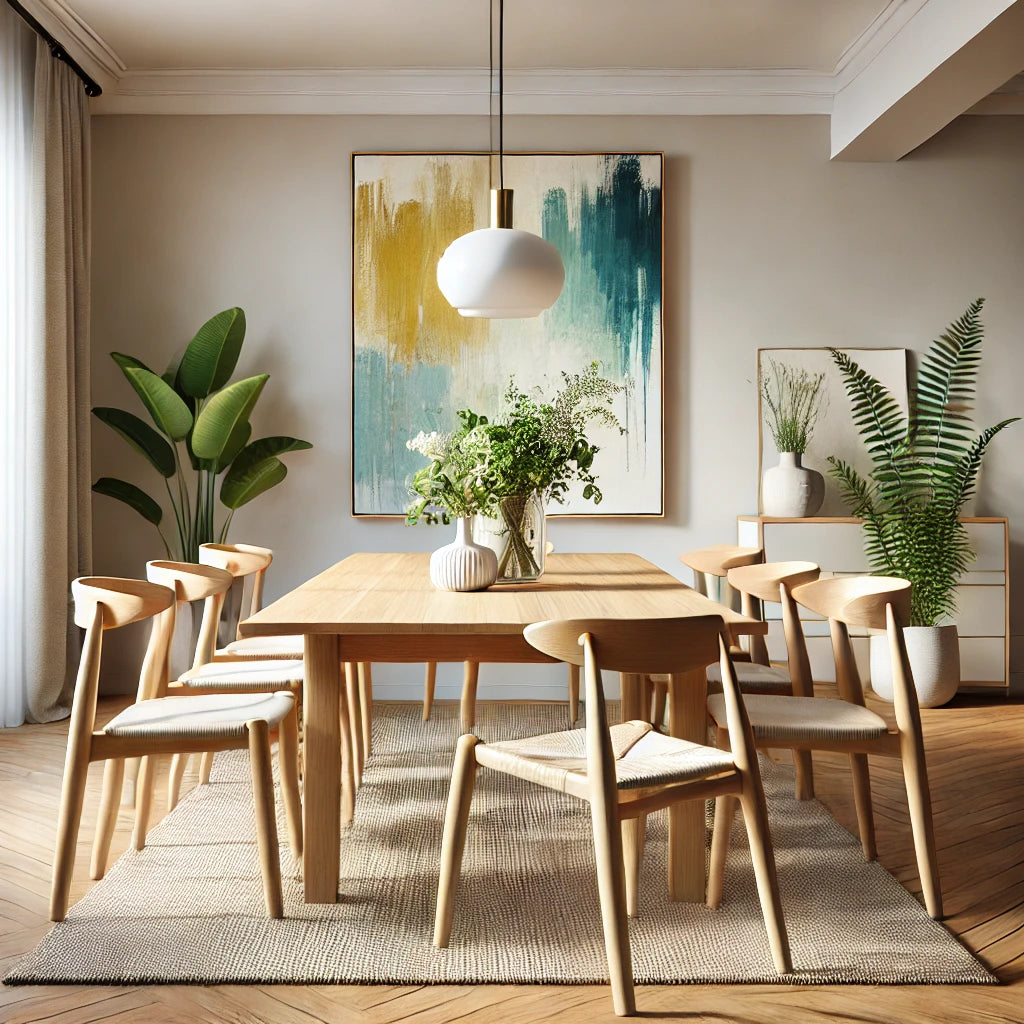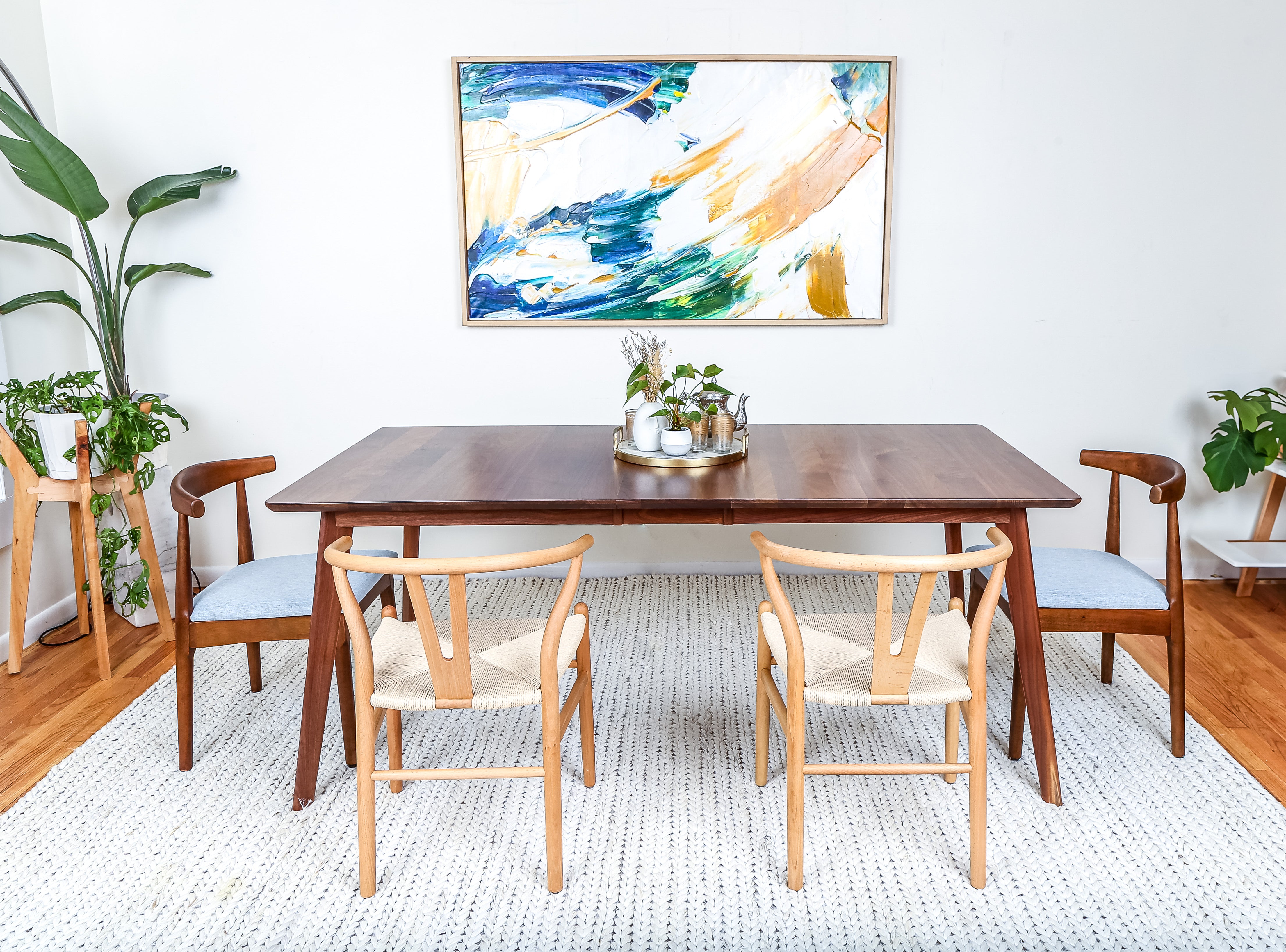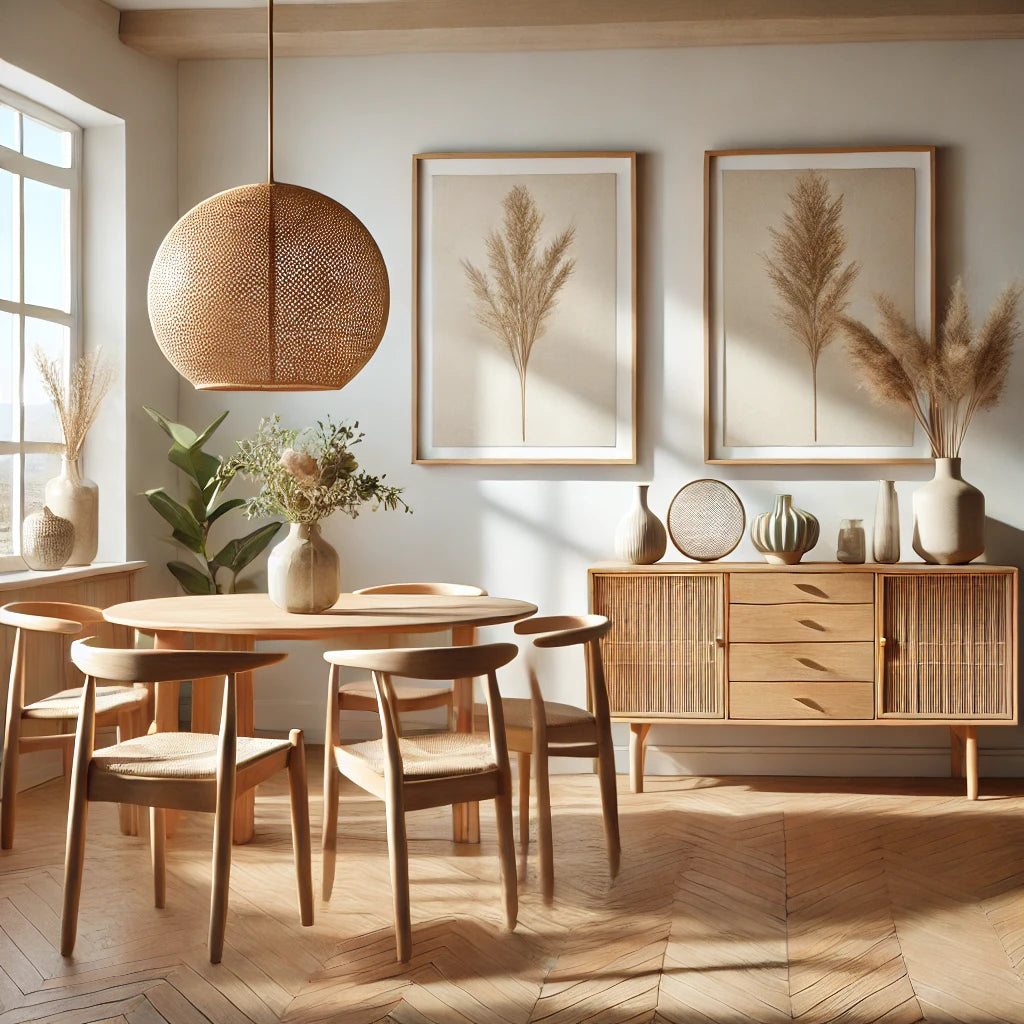Discovering Japandi Style: The Artful Fusion of Japanese Tranquility and Scandinavian Simplicity
by Robert William on Oct 16, 2023

Step into a world where Japanese serenity meets Scandinavian minimalism

Introducing Japandi, the artful fusion of two design philosophies that results in a harmonious and visually stunning aesthetic.
With its clean lines, natural materials, and neutral color palette, Japandi creates a sense of peace and tranquility in any space. Drawing from Japanese design principles, Japandi embraces simplicity, balance, and connection with nature. Every element is carefully chosen for its functionality and beauty. Meanwhile, Scandinavian design brings warmth, coziness, and a sense of hygge. The result is a perfect blending of cultures, where minimalism meets comfort and timeless elegance. Whether it's in your living room, bedroom, or office, Japandi can transform your space into a sanctuary. Imagine a clutter-free environment with natural light and carefully curated decor that sparks joy. Japandi encourages mindfulness, helping you find balance and peace in a busy world. In this article, we delve deeper into the origins and principles of Japandi design, exploring its key elements and how to incorporate them into your own home. Get ready to embark on a journey of simplistic beauty and find inspiration in the artful fusion of Japanese tranquility and Scandinavian simplicity.
The History and Origins of Japandi Style
Japandi style may be a relatively new trend, but its origins go back centuries. Japanese design principles are deeply rooted in the country's culture and history, dating back to the 6th century. The Japanese value simplicity and harmony, which is reflected in their art, architecture, and design.
Scandinavian design, on the other hand, emerged in the 1930s as a response to the industrialization of furniture production. The movement emphasized functionalism, minimalism, and the use of natural materials. It quickly gained popularity worldwide and is now synonymous with timeless elegance and comfort.
Japandi is a natural fusion of these two design philosophies, each complementing the other's strengths. The result is a design style that combines the best of both worlds, creating a space that is both tranquil and cozy.

Key Principles of Japandi Style
Japandi design is rooted in the principles of simplicity, harmony, and balance. Every element in a Japandi space is carefully chosen for its functionality and beauty. Each piece of furniture serves a purpose, and there is no room for clutter or unnecessary decor.
Balance is another essential principle of Japandi design. The space must feel balanced, both visually and emotionally. This can be achieved by using a neutral color palette, natural materials, and clean lines.
Finally, Japandi design emphasizes connection with nature. The use of natural materials, such as wood, stone, and linen, brings the outdoors inside, creating a sense of tranquility and peace.
Elements of Japanese Design in Japandi Style
Japanese design is characterized by simplicity, minimalism, and a connection with nature. These elements are evident in Japandi design, where clean lines, natural materials, and a neutral color palette are used to create a sense of tranquility.
One of the most significant influences of Japanese design on Japandi is the concept of wabi-sabi. This philosophy embraces imperfection and impermanence, and it is reflected in the use of organic materials, such as wood, stone, and pottery. The beauty of these materials lies in their natural variations and imperfections.
Another element of Japanese design in Japandi is the use of shoji screens. These traditional Japanese screens are made of translucent paper and wood frames, allowing natural light to filter through while providing privacy. In Japandi design, shoji screens are often used as room dividers or window coverings.
Elements of Scandinavian Design in Japandi
Scandinavian design is characterized by warmth, coziness, and a sense of hygge. These elements are evident in Japandi design, where natural materials, soft textures, and warm lighting are used to create a sense of comfort and relaxation.
One of the most significant influences of Scandinavian design on Japandi is the use of natural materials, such as wood, leather, and wool. These materials add warmth and texture to the space, creating a cozy and inviting atmosphere.
Another element of Scandinavian design in Japandi is the use of geometric shapes and patterns. These elements add visual interest to the space while maintaining a sense of simplicity and minimalism.
Colors and Materials in Japandi Design
Japandi design is characterized by a neutral color palette, with shades of white, beige, gray, and black. These colors create a sense of calm and tranquility, allowing the natural materials and textures to shine.
Natural materials, such as wood, stone, and linen, are essential in Japandi design. These materials bring the outdoors inside, creating a sense of connection with nature. The use of organic materials also reflects the Japanese philosophy of wabi-sabi, where imperfection is celebrated.

Incorporating Japandi in Different Spaces
Japandi design can be incorporated into any space, from the living room to the bedroom to the kitchen. The key is to keep the design simple, balanced, and clutter-free.
In the living room, a Japandi design may include a neutral-colored sofa with clean lines, natural wood coffee table, and a shoji screen room divider. Soft textures, such as wool or fur throws, add warmth and comfort.
In the bedroom, a Japandi design may include a low platform bed with a natural wood headboard, linen bedding, and a minimalist bedside table. Soft lighting and a neutral color palette create a peaceful and calming atmosphere.
In the kitchen, a Japandi design may include natural wood cabinets, stone countertops, and simple, functional accessories. The focus is on functionality and beauty, with no room for unnecessary clutter or decor.
Japandi DIY Projects and Home Decor Ideas
One of the best things about Japandi design is that it lends itself well to DIY projects and home decor ideas. Here are a few ideas to get you started:
- Create a shoji screen room divider using wooden frames and translucent paper.- Make your own natural wood furniture, such as a coffee table or bookshelf.
- Use natural materials, such as driftwood or stones, to create unique decorative pieces.
- Create a cozy reading nook with a low platform chair, soft lighting, and a wool throw.
Tips for Achieving Balance and Harmony in Japandi Design
Achieving balance and harmony in Japandi design is essential for creating a tranquil and peaceful space. Here are a few tips to keep in mind:
- Keep the design simple and clutter-free.- Use a neutral color palette with natural materials.- Embrace imperfection and celebrate organic materials.- Use soft textures and warm lighting to create a cozy atmosphere.- Incorporate plants and greenery to bring the outdoors inside.
Conclusion - Embracing the Beauty of Japandi
Japandi design is a perfect fusion of Japanese tranquility and Scandinavian simplicity, creating a harmonious and visually stunning aesthetic. Whether you're looking to transform your living room, bedroom, or office, Japandi design can help you create a sanctuary of peace and tranquility.
By embracing the principles of simplicity, harmony, and connection with nature, you can achieve a perfect balance of minimalism and comfort. So, why not try incorporating Japandi design into your own home and discover the beauty of this artful fusion?








